It was first performed at the Savoy Theatre on the 25th November 1882, the seventh of the fourteen operettas written by Gilbert and Sullivan running for 398 performances. It was premiered only three days after Patience had closed. It was the first work to premiere at the Savoy. It opened on the same evening in New York followed by the first Australasian production on the 9th May 1885 in Melbourne, Australia followed by its first production in Timaru on the 10th July 1885.
From Alamy.com
The brunt of Gilbert’s satire is directed in this operetta at the House of Lords; it is portrayed as the stronghold of the privileged, those who were ineffective and dim-witted who were only there because of their noble birth. Also, the political party system, the law and other institutions come in for ridicule.
To quote from Leslie Baily’s book ‘Iolanthe is so delectable combination of political satire and fairy magic, with the two sides – mortal and immortal – held in unique balance by Gilbert, that W. S. G. himself seems to have been caught in the spell of it’.
New lighting technologies made such special effects as sparkling fairy wands possible for the first time. And, the principal fairies’ heads were also lit by wreaths of small illuminated stars attached to a battery.
Iolanthe was received well although it was thought that the second act needed some paring.
Iolanthe was very successful for the partnership. Nevertheless, Sullivan wished to discontinue writing the operettas with Gilbert because he viewed the writing of them beneath him. On the day of the opening of Iolanthe Sullivan received a letter from his broker, Edward Hall telling him that Hall had most of Sullivan’s money. So, he signed a new contract with Gilbert and D’oyly Carte so that his financial situation would be secure.
One framed hand coloured photograph of Nellie Hodgekinson as Iolanthe sitting on a bench wearing a flowing draped dress by Edward Millard. c1899. From the Tairawhiti Museum collection.
It is thought that Iolanthe contains a change in Sullivan’s writing style as he used themes that recur and evolve throughout the operetta making the music more fluid. He uses a leitmotif, as Wagner had done in his Ring cycle. There is a distinctive four-note theme that is associated with Iolanthe’s character. The overture, which Sullivan wrote himself, is exquisite was only written three days before the premiere. As was often the case, Sullivan was working against time when writing the music. In a single evening he wrote five songs.
Gilbert designed the costumes himself for Iolanthe. Thomas Chappell, the publisher of Iolanthe told Gilbert that over 10,000 vocal and pianoforte scores had been sent out from Bond St the night of the premiere.
Evening Post 9th March 1883
A review of the premiere in the United States is published in the Lyttelton Times dated 24th January 1883. The reviewer feels that it was the presentation of the operetta that was the strongest aspect of the first performance rather than the libretto or the music. It seems that some of the audience, were not able to understand all of the words. However, they do state that the operetta was ‘full of funny situations and humourous dialogue’. They go on to state that ‘fairies and mortals are mixed in a most bewildering way, and the author, with his topsy-turvy fancy and amusing lines, illustrates institutions peculiarly English in an absurdly comical fashion’. The reviewer criticises Sullivan’s score, saying that mostly it was ‘uninteresting and common-place’ and that it was not as tuneful as some of the earlier Gilbert and Sullivan operettas. However, the reviewer goes on to describe many songs in favourable terms. Lastly, the article says that the criticisms in the English papers were very similar to the one from the United States.
Iolanthe in front of Porter's House, 1892. W F Crawford (b.1844, d.1915): Photographer. Tairawhiti Museum Collection.
By early March 1883, the score for Iolanthe was available in New Zealand to buy. On the 1st July 1885 the Timaru Musical and Dramatic Club had a dress rehearsal for their production of Iolanthe. It is described in the South Canterbury Times on the 2nd July as being a ‘magnificent novelty and that the music is most taking with some splendid choruses’.
On the 19th March 1887 the Evening Star has a review of a J. C. Williamson production of Iolanthe in Dunedin. It comments that they prefer The Mikado as it is ‘more original’. They state that the operetta is beautifully staged and that there are some striking effects produced by the use of electric light. The Otago Daily Times dated 21st March 1887 has a review of the production of Iolanthe as well. They state that ‘there is much to admire in all Gilbert and Sullivan’s operas, none can boast such a daintily charming scenario as “Iolanthe” or such continuity of delicate and beautiful music. Catchy the music is certainly not, but it is uniformly delightful, and from beginning to end there is not a tedious number’.
In The Press dated 15th April 1887 there is an article about the production of Iolanthe at the Theatre Royal. It seems that Iolanthe became more popular than was expected.
Hawera and Nornamby Star 28th April 1887
Evening Post 9th May 1887
An article in the New Zealand Times dated 6th May 1887 has a review of the production of Iolanthe at the Wellington Opera House the evening before. This was the second performance of Iolanthe. Many people were turned away. Interestingly the last sentence reads ‘it has already quite eclipsed “The Mikado” in popular estimation, largely, no doubt, owing to the superior beauty of the music’.
Front cover of programme of the Really Authentic Gilbert and Sullivan Performance Trust, Dunedin
The Lyttelton Times dated 11th May 1887 has a small piece about a ‘very clever carton The Press had issued in which the Premier is represented in the character of the Lord Chancellor in “Iolanthe”’.
Observer 18th June 1887
Iolanthe is performed in Auckland on the 13th June 1887 at the Opera House. A quote from the review ‘ the music of the opera is so charming, the libretto is so piquant, the dresses so beautiful and the scenery and other effects so good and appropriate that the appreciation of the audience is invariably won and freely expressed. Encores were of frequent occurrence last evening, and indeed were so numerous that in some instances they could not be complied with’.
The Christchurch Amateur Society performed Iolanthe on the 26th February 1889. The Star dated 27th February 1889 special mention is made of the use of several electric lights in the head-dresses of the Queen of the Fairies and her chief attendants. The person who played the Lord Chancellor whose make-up was ‘simply marvellous’ was described as being ‘the personification of a lawyer – thin-lipped, parchment-skinned, with shrivelled features, half-closed but shrewdly-twinkling eyes, attenuated figure, angular and jerky gestures, cringing postures, incisive speech, and an evidently keen relish for the legal quibbles suggested by the circumstances of the play’.
From personal ephemera collection.
There is mention in some of the reviews of amateur productions of Iolanthe of the use of ‘limelight’. It was produced by heating a piece of quick lime to a high temperature. The expression “in the limelight’ is derived from the use of limelight in theatres.
One review in the Hawke’s Bay Herald on the 12th November 1889 believed that the audience were inclined to be critical at the beginning of the performance but soon after the beginning their views changed. Apparently, so many flowers were thrown onto the stage that it resembled a flower garden.
Evening Post 23rd May 1891
Fielding Star 3rd December 1891

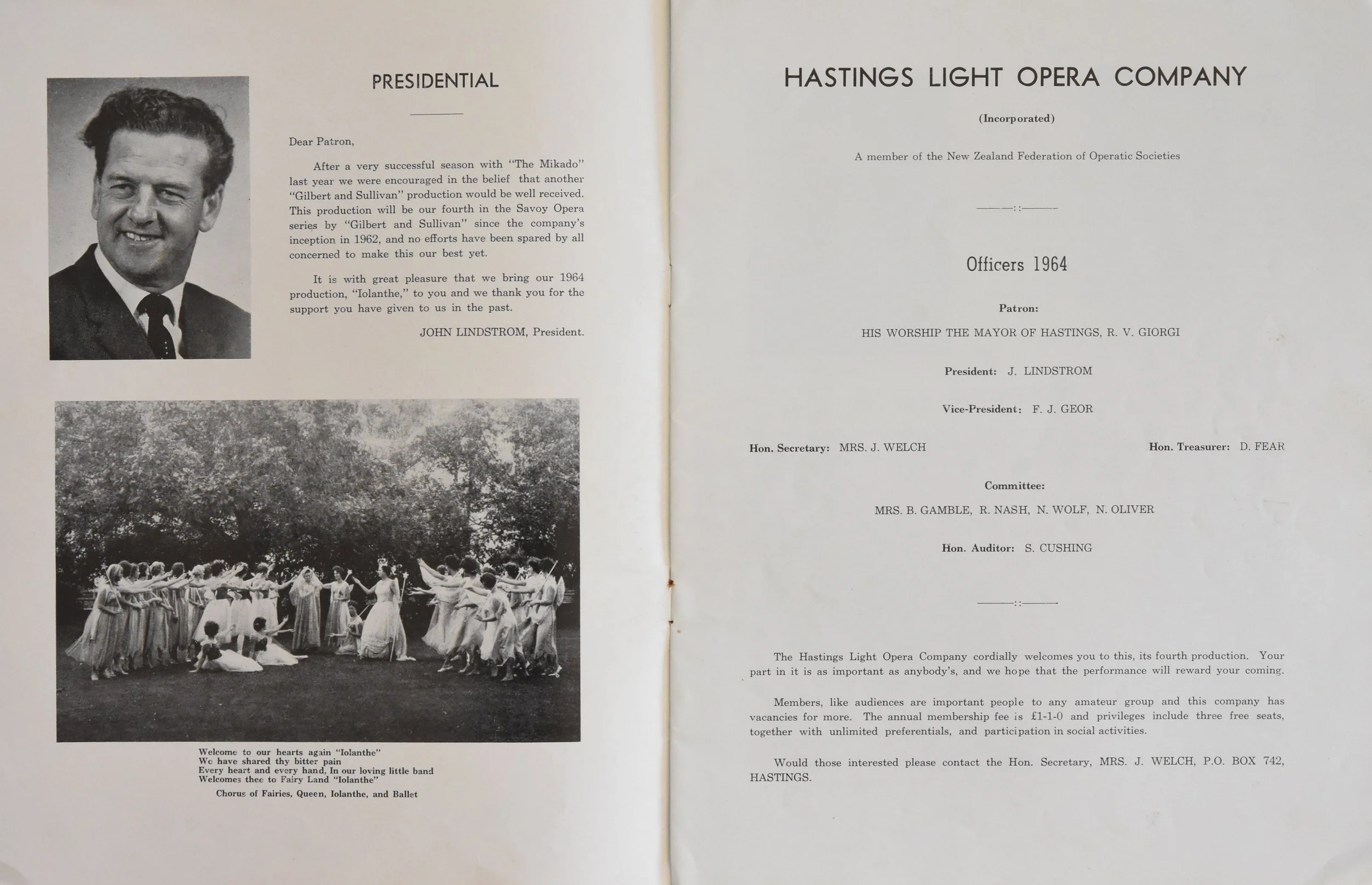
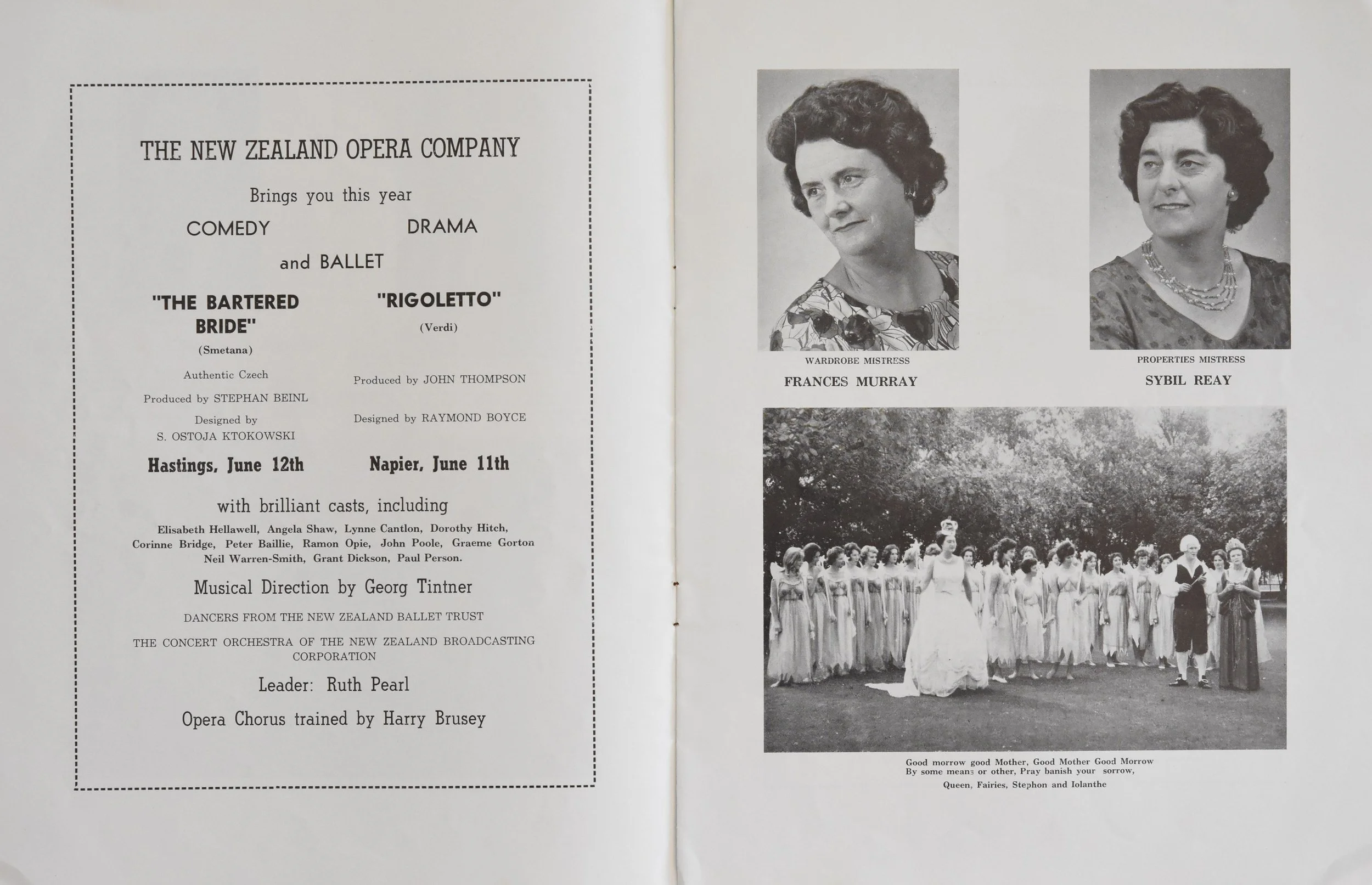
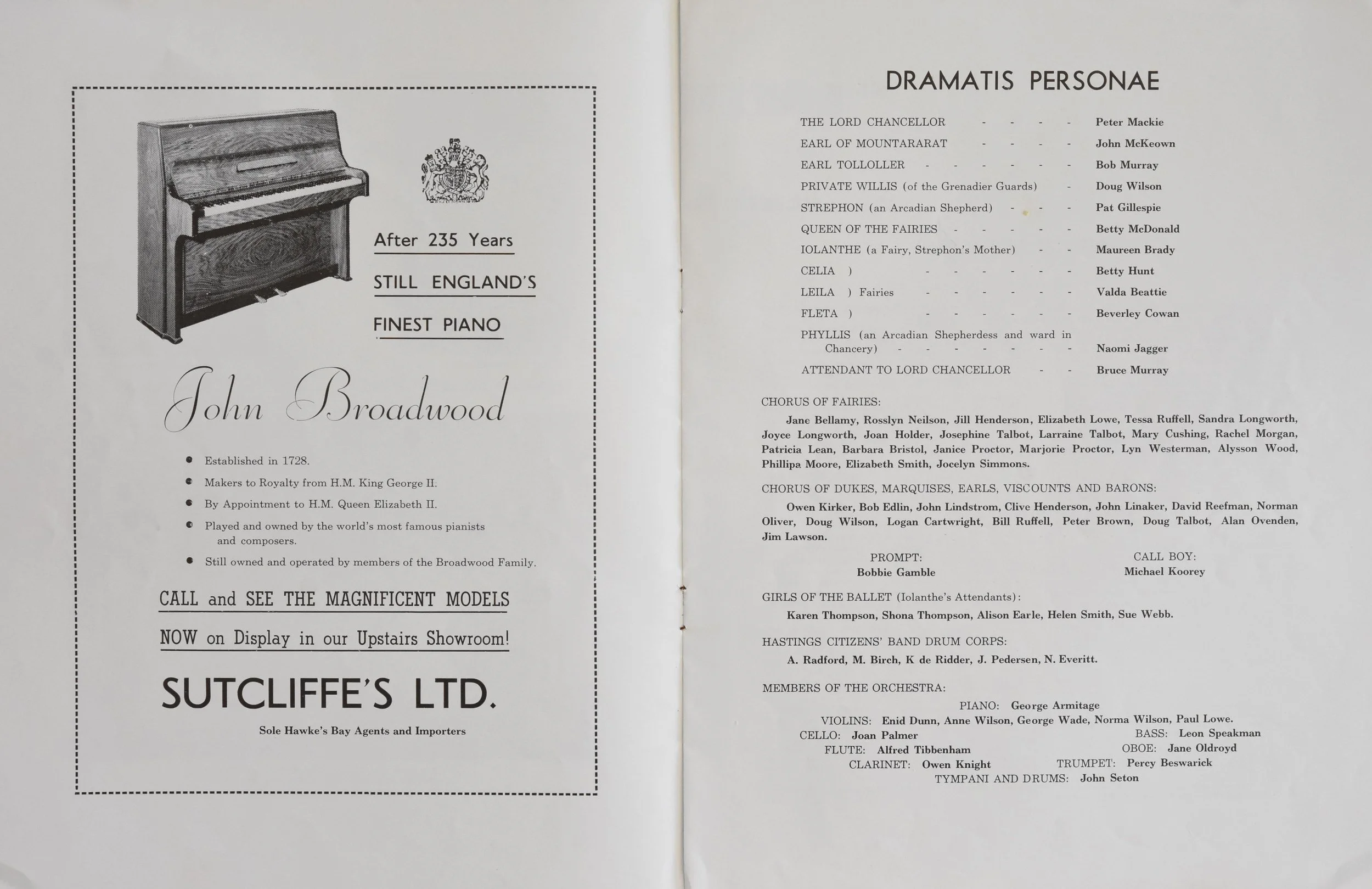
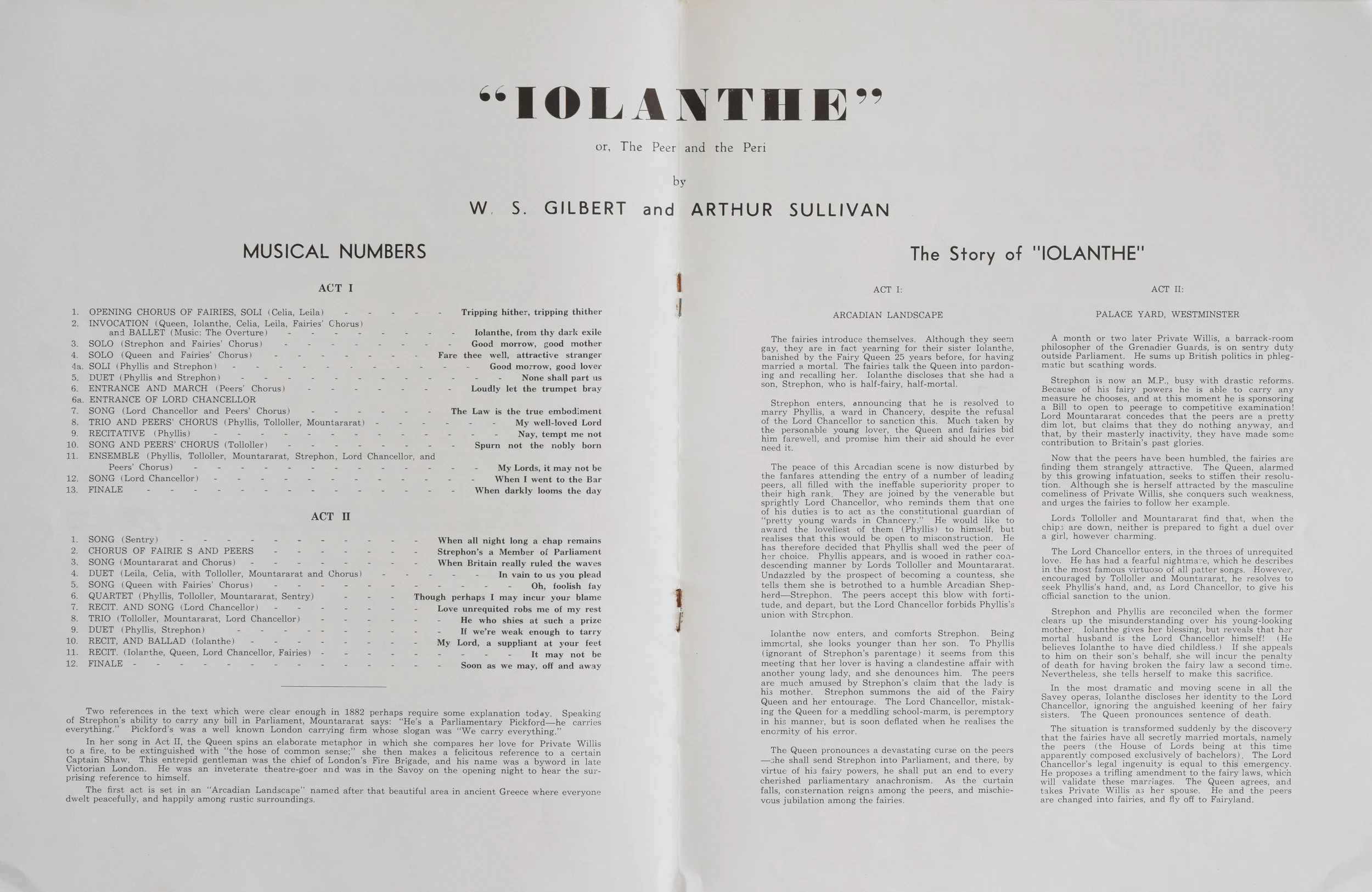
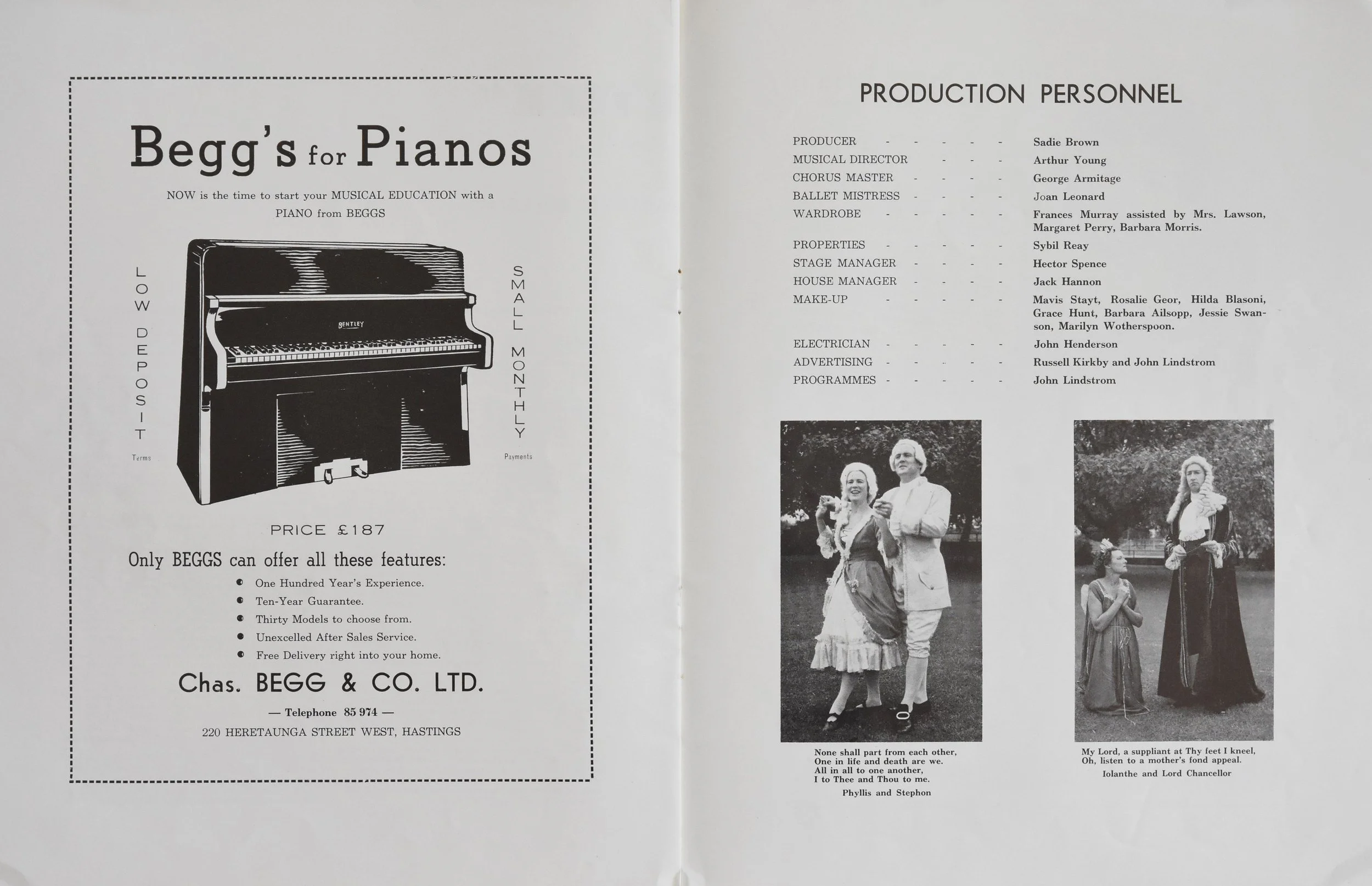
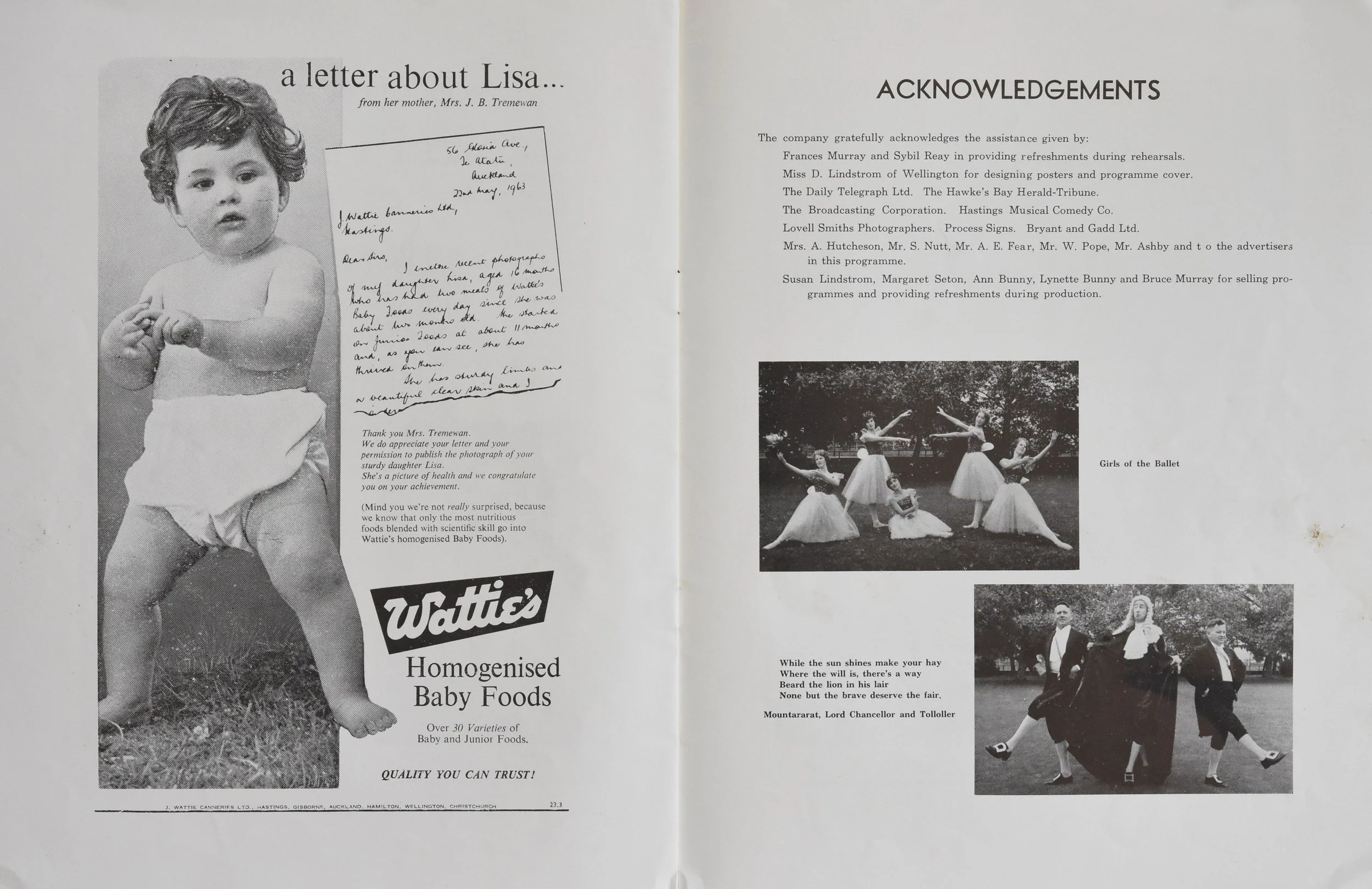
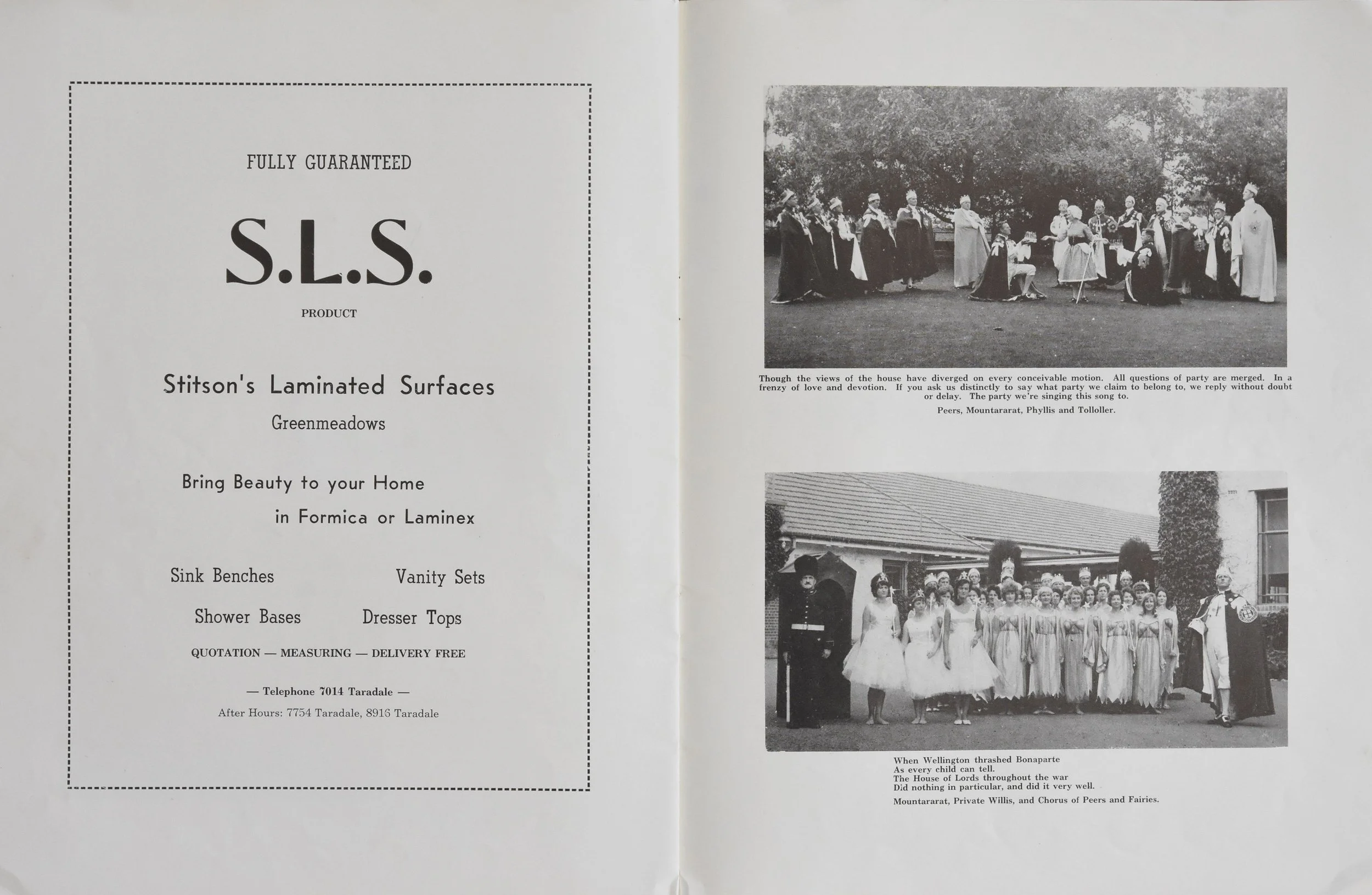
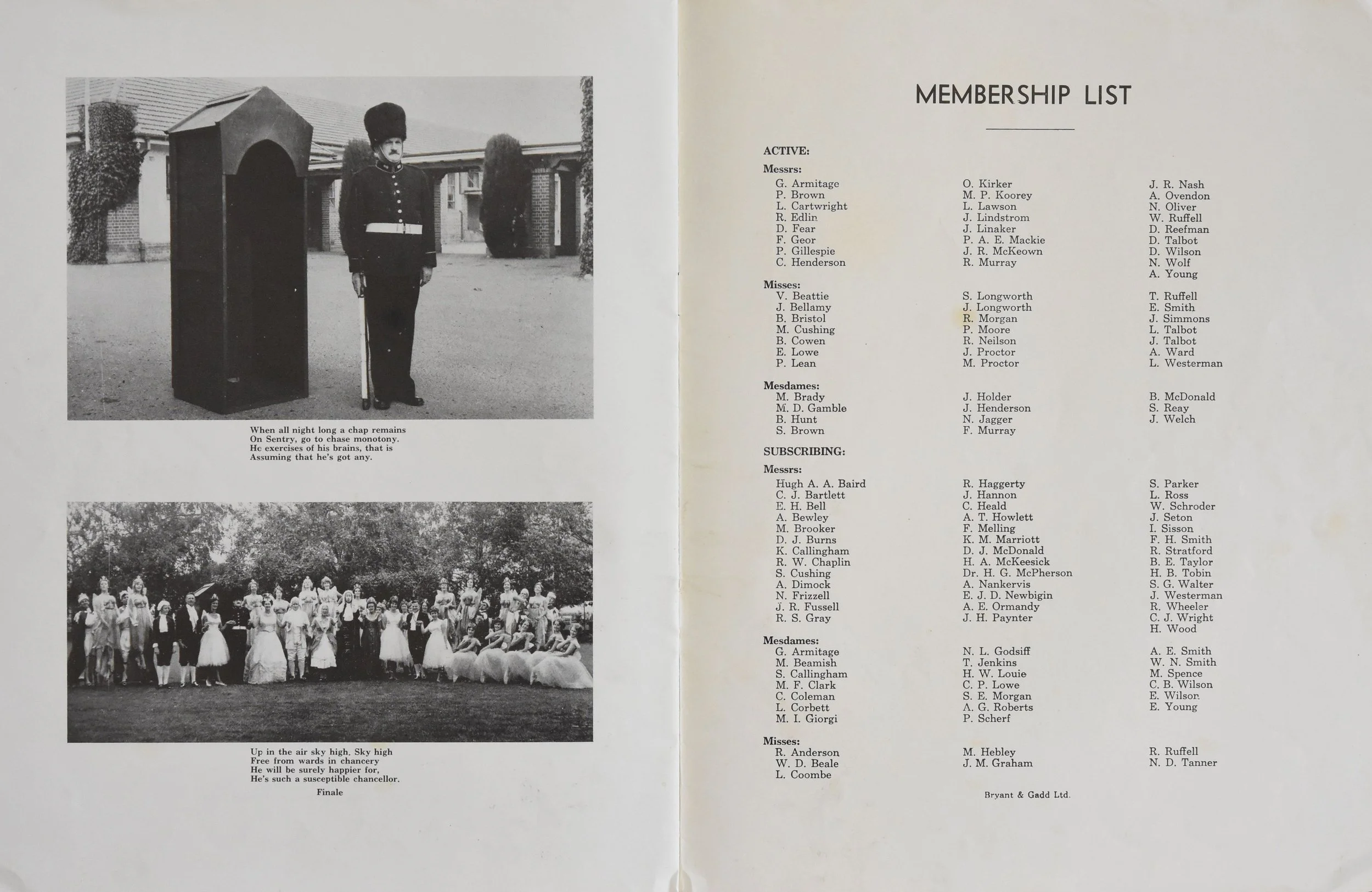
Programme from personal ephemera collection.
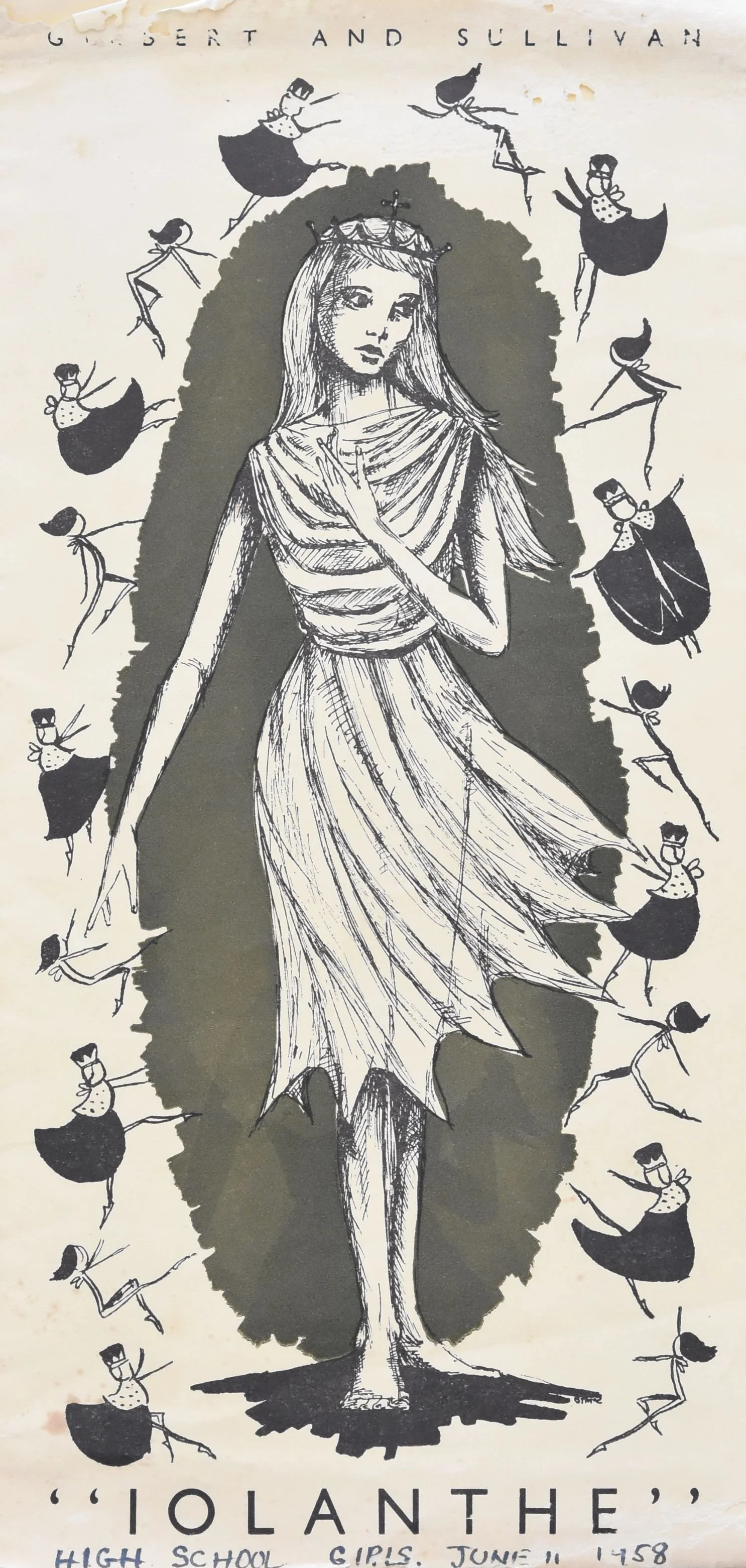
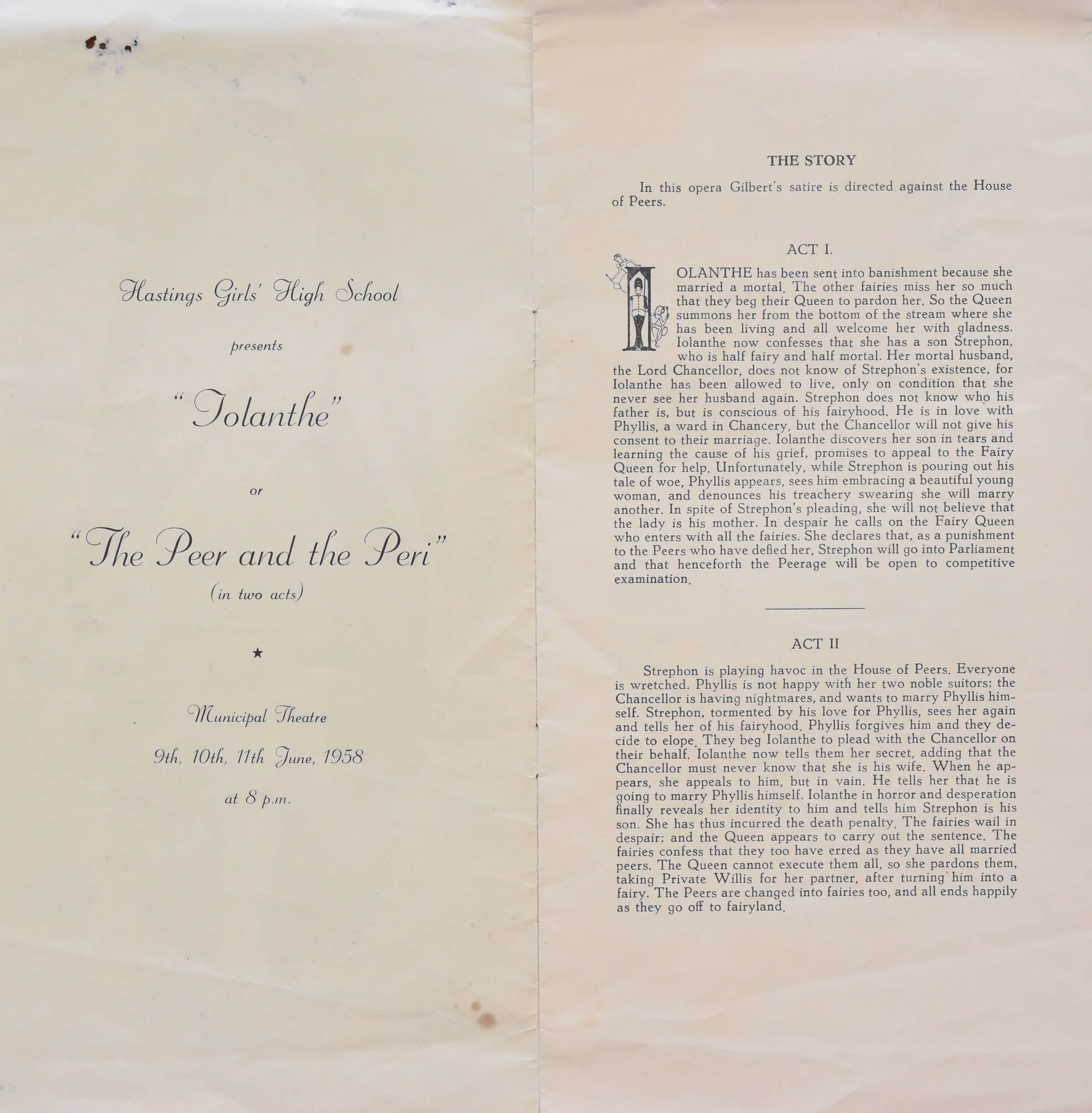
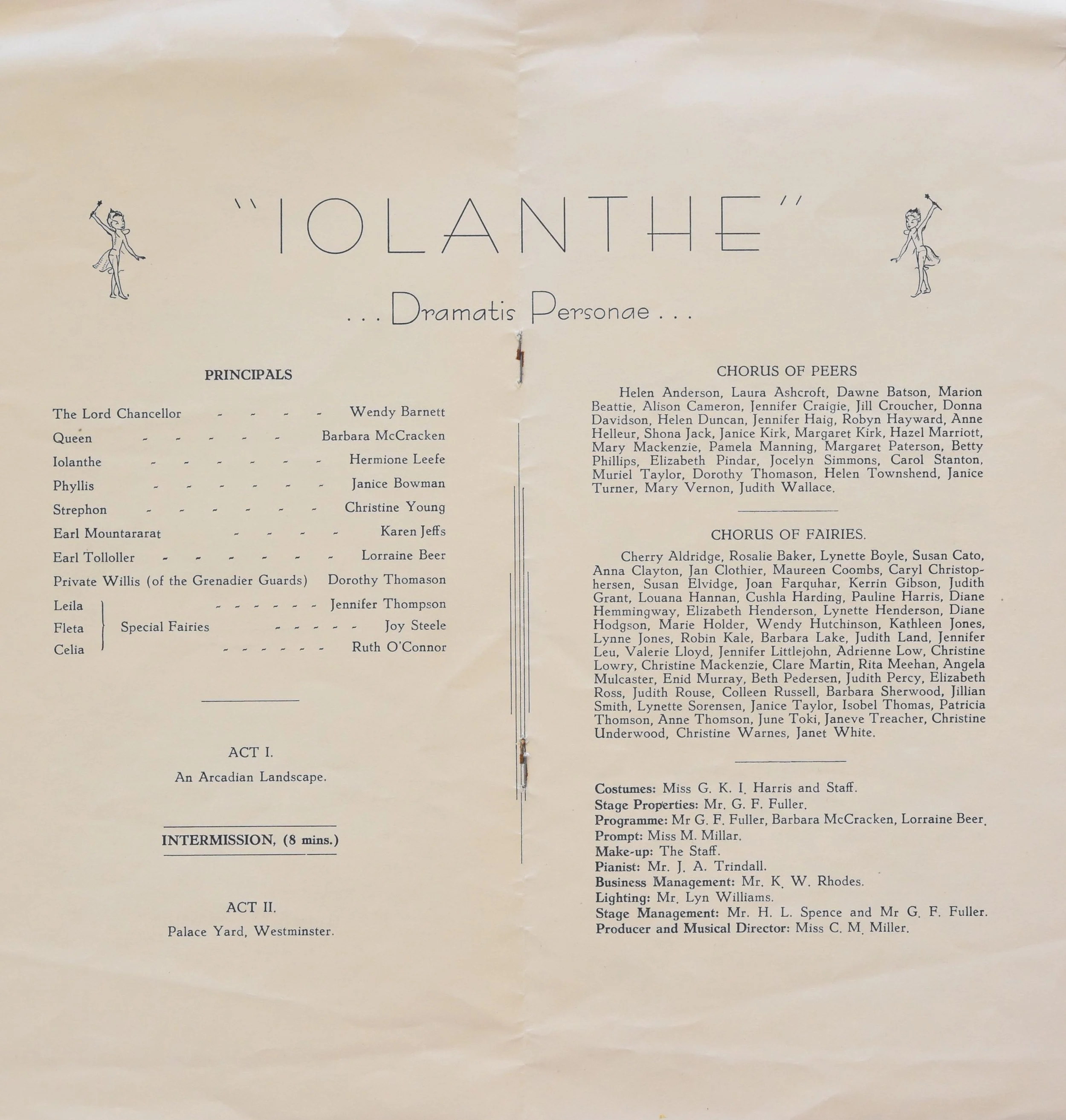
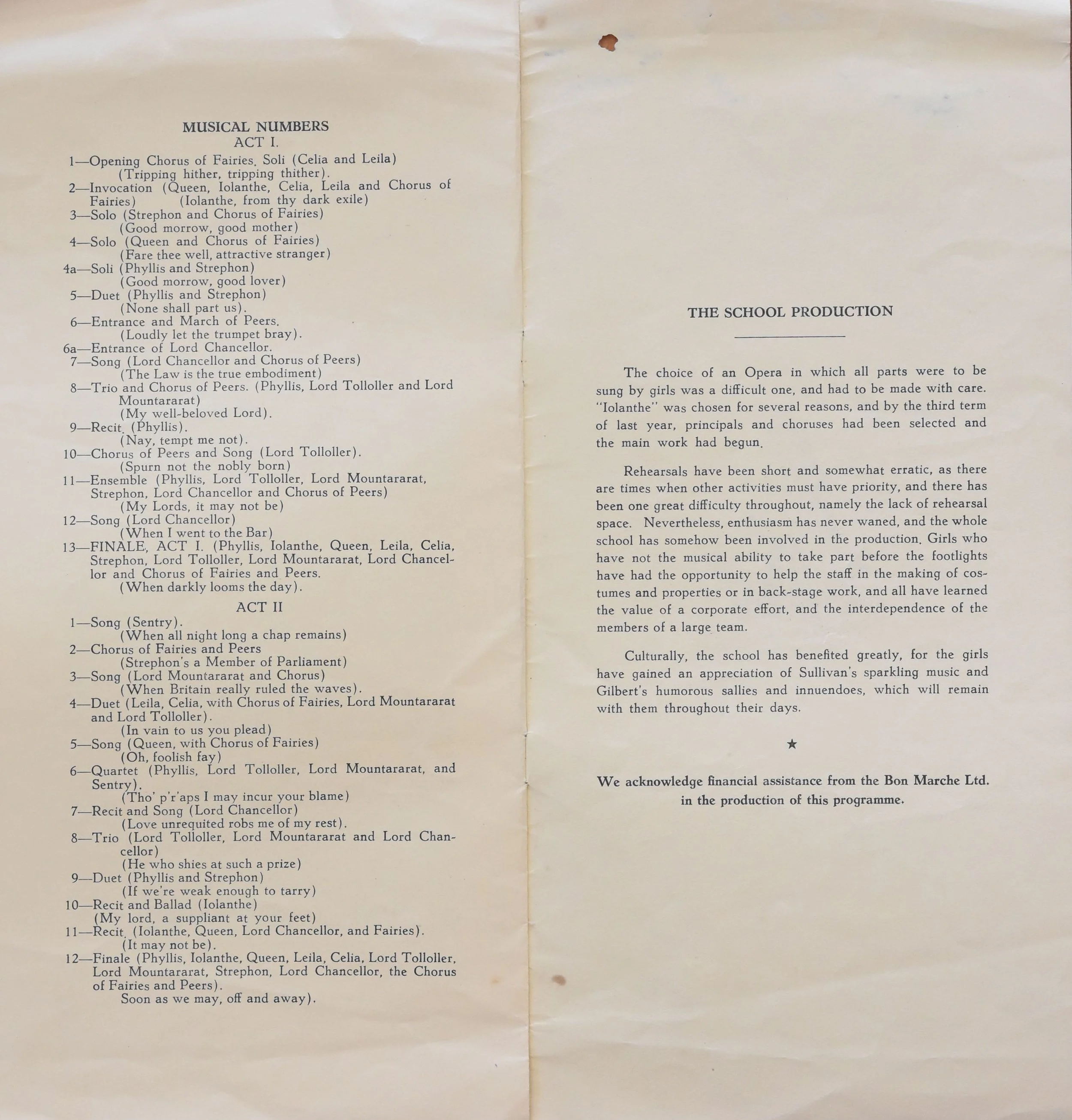
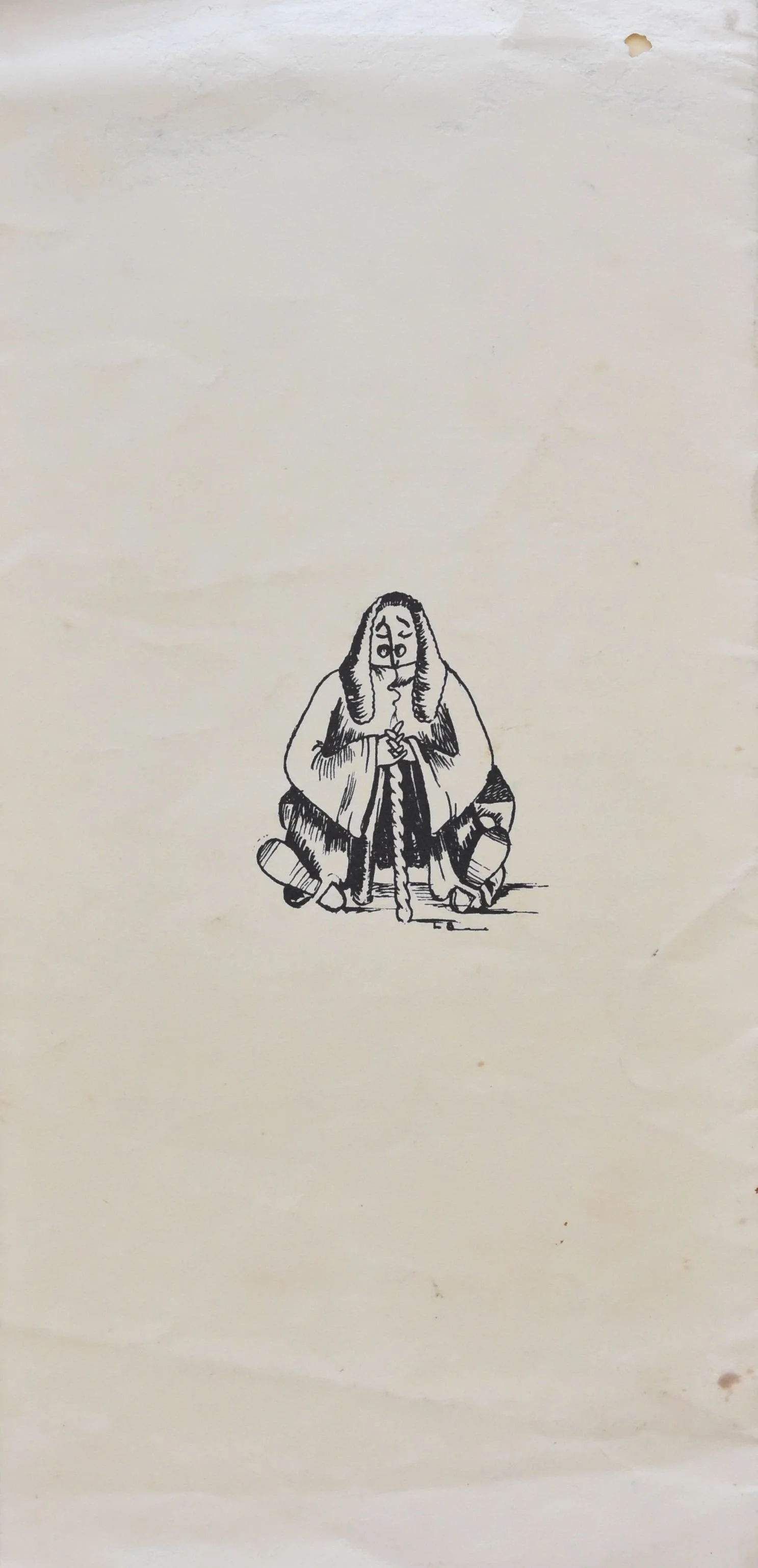
This seems to be a production of Iolanthe. From personal photo collection.
From personal ephemera collection.
en.wikipedia.org/wiki/Iolanthe
The Gilbert and Sullivan Book, Leslie Baily, published by Spring Books 1962
www.paperspast.natlib.co.nz













